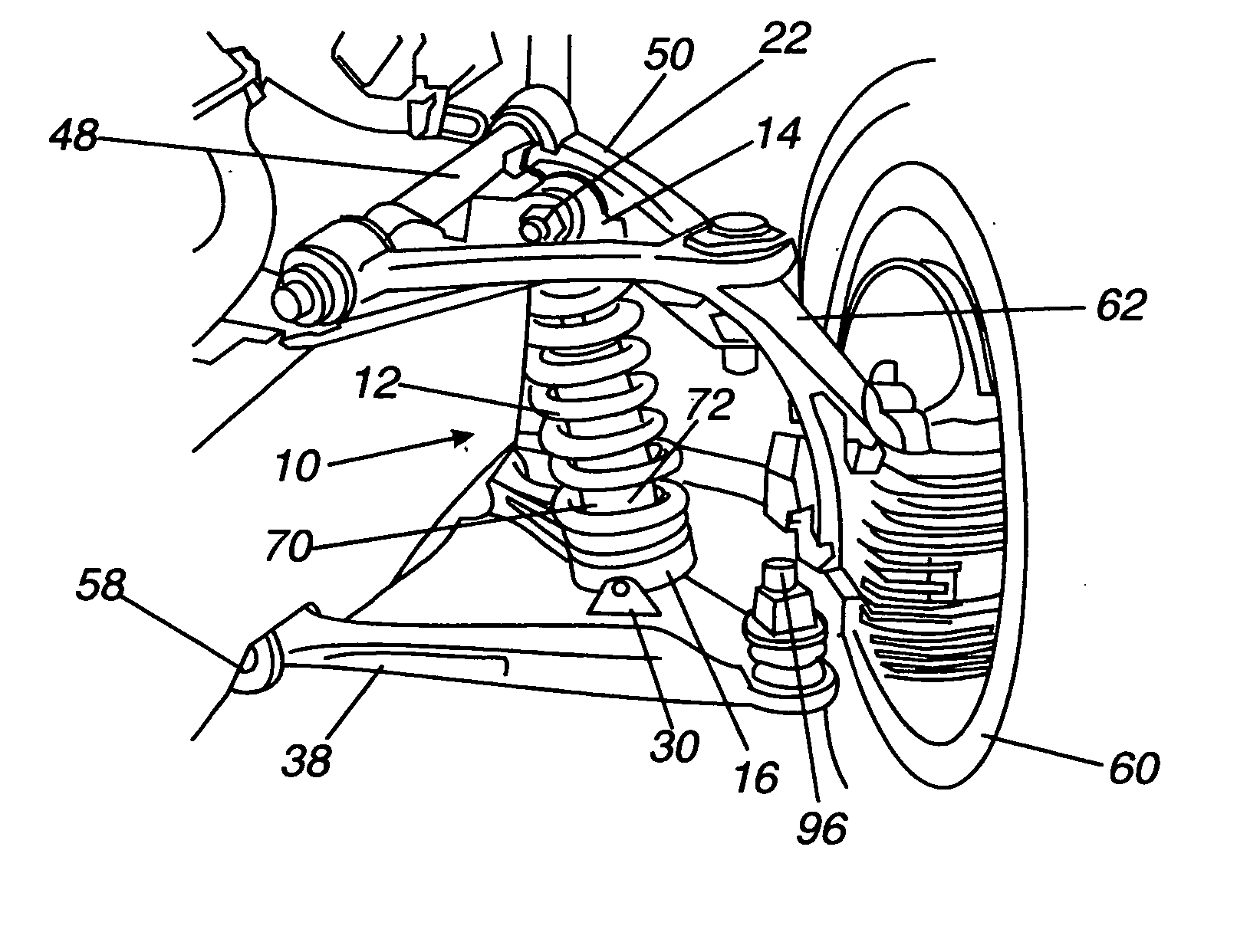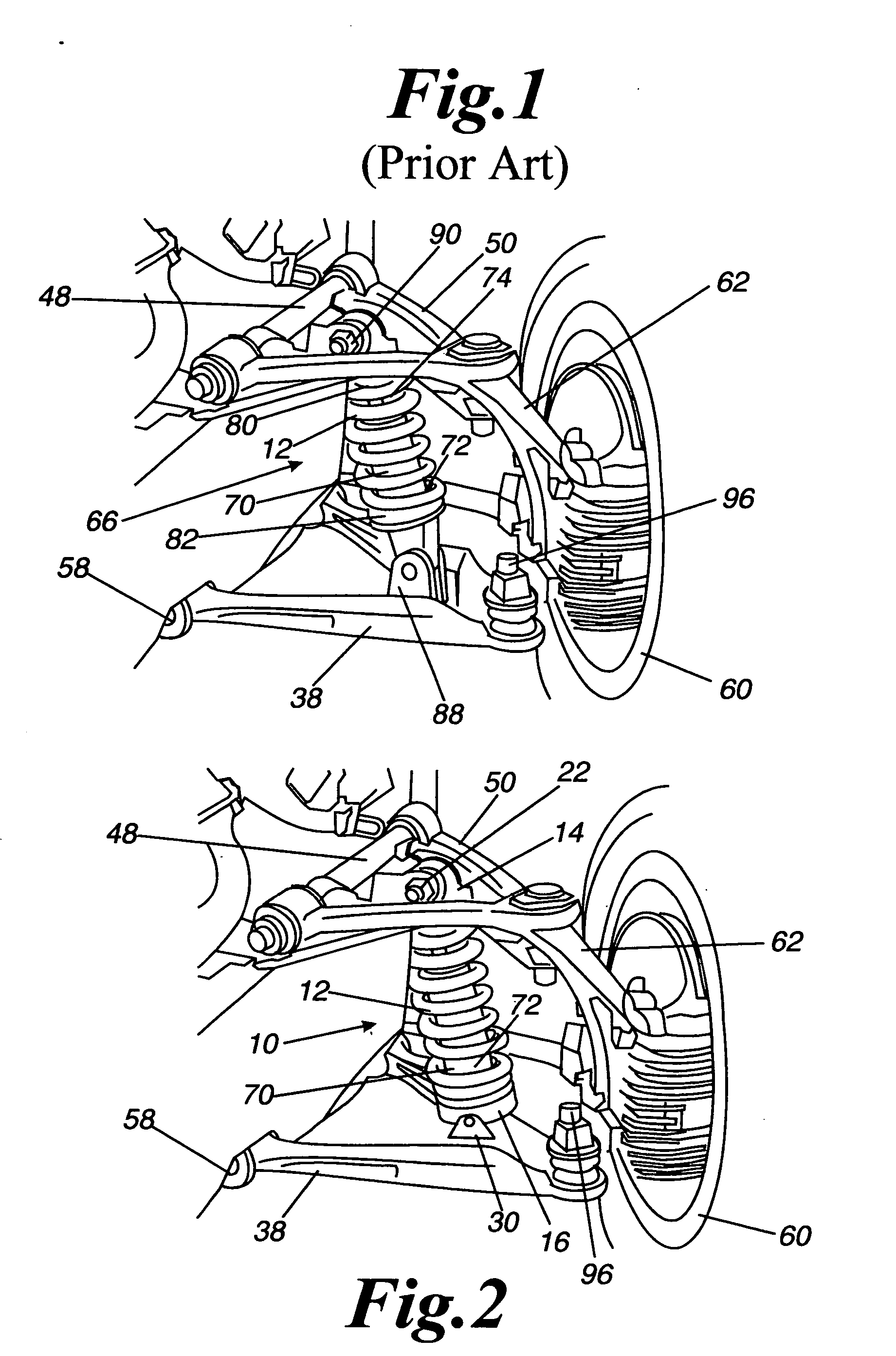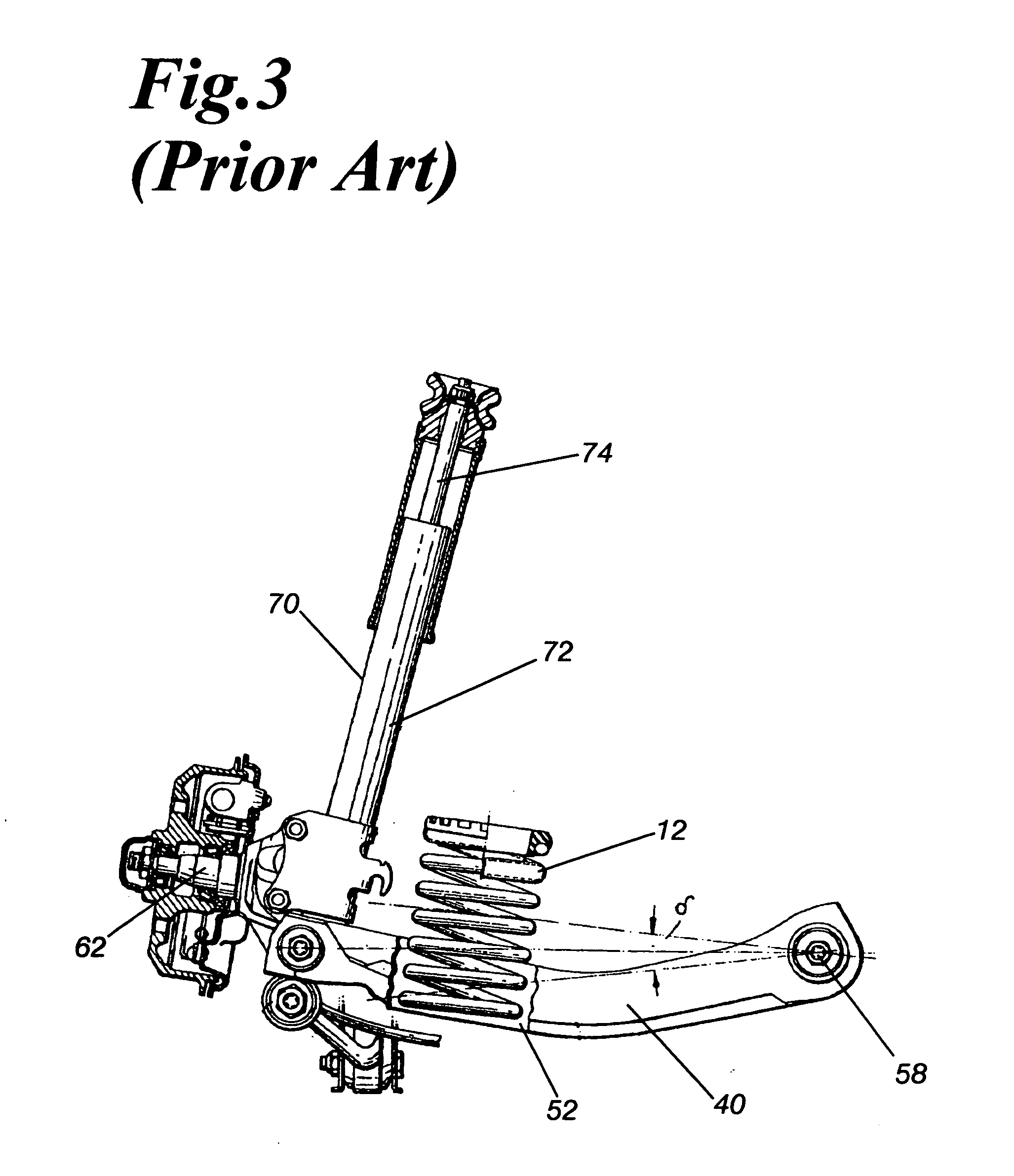Linear suspension spring
- Summary
- Abstract
- Description
- Claims
- Application Information
AI Technical Summary
Benefits of technology
Problems solved by technology
Method used
Image
Examples
Embodiment Construction
[0032] The invention is a linear suspension spring apparatus for a vehicle, wherein the suspension spring is mounted between a pivoting lower seat and a pivoting upper seat. The suspension spring is a helical compression spring, and characteristically of helical compression springs, the spring resists deformation from the centerline, as well as from compression. Deformation away from the centerline produces curvature of the spring, so that the coils on one side of the spring will be more compressed and the coils on the other side are more expanded. The greater the compression, the greater the force the spring exerts. Therefore, when the spring is mounted between two seats having substantially planar bases, a compression spring exerts equalizing forces on the opposing seats to minimize the compression forces, and this minimum is attained when the opposing seats are substantially parallel to each other. In the suspension apparatus, one of the pivoting seats is mounted to an articulati...
PUM
 Login to View More
Login to View More Abstract
Description
Claims
Application Information
 Login to View More
Login to View More - R&D
- Intellectual Property
- Life Sciences
- Materials
- Tech Scout
- Unparalleled Data Quality
- Higher Quality Content
- 60% Fewer Hallucinations
Browse by: Latest US Patents, China's latest patents, Technical Efficacy Thesaurus, Application Domain, Technology Topic, Popular Technical Reports.
© 2025 PatSnap. All rights reserved.Legal|Privacy policy|Modern Slavery Act Transparency Statement|Sitemap|About US| Contact US: help@patsnap.com



